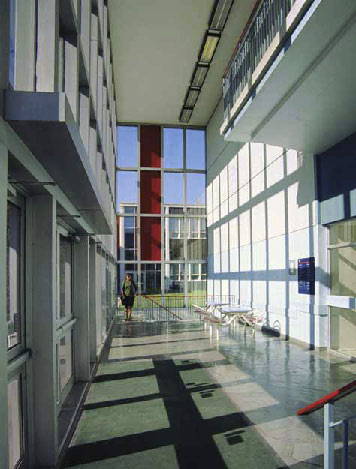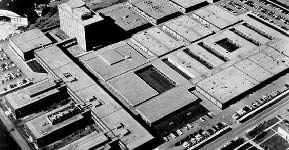Northern Alberta Institute of Technology — c. 1961
|
Princess Elizabeth Avenue and 106 Street Designed by: Alberta Public Works (George Jelinek design architect) In 1959, the Government of Alberta announced their decision to build a facility in Edmonton to supplement the provincial capacity for apprenticeship and vocational training that was handled solely by the Provincial Institute of Technology (now SAIT) in Calgary. To facilitate this expansion of services, Jack P. Mitchell was appointed the Principal of a proposed new provincial vocational school in Edmonton in 1960. Mitchell negotiated that the newly named Northern Alberta Institute of Technology (NAIT) would be built near the city centre on a 21-acre site adjacent to Edmonton’s Municipal Airport and the purchase of land was completed by Alberta Public Works in October 1961. The Institute was officially opened in May 1963 by Premier Ernest Manning. The $16 million campus housed 80 staff and featured 15 acres of floor area under one roof, including 53 shops, 39 labs, 77 classrooms, 109 offices, 155 service areas, as well as a cafeteria, library, gym, auditorium, student activity area and power plant. The design and construction of NAIT was completed in approximately 3 years and was facilitated by the pre-cast structural system of the buildings. The NAIT campus owes much to Mies van der Rohe’s International Style campus design for the Illinois Institute of Technology (IIT) campus in Chicago. According to the Mies van der Rohe Society at IIT,
These traits can be seen in the NAIT campus and building designs through the grid-like pattern of the buildings, separated by streets and landscaped courtyards and the low-rise nature of the rectilinear pre-cast concrete frames clad in brick and glass. |



